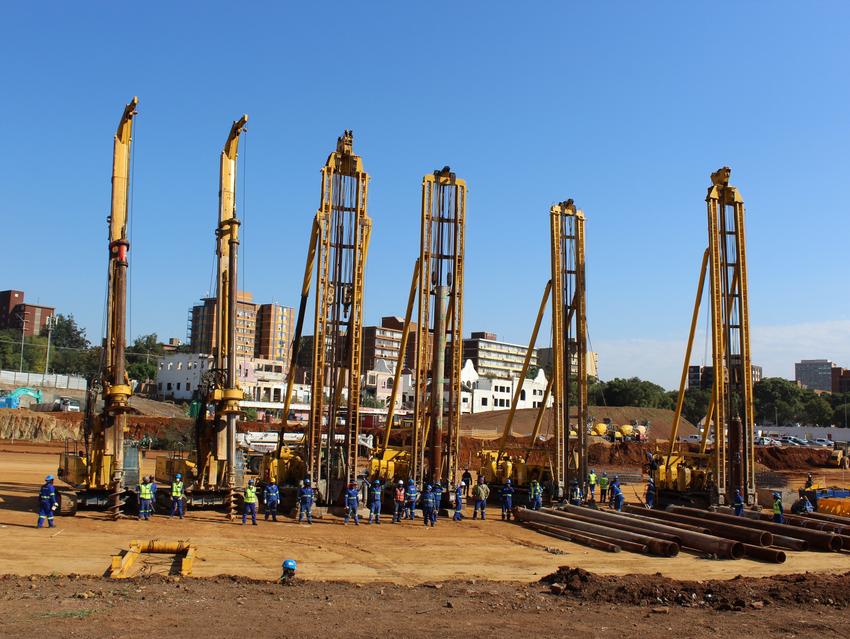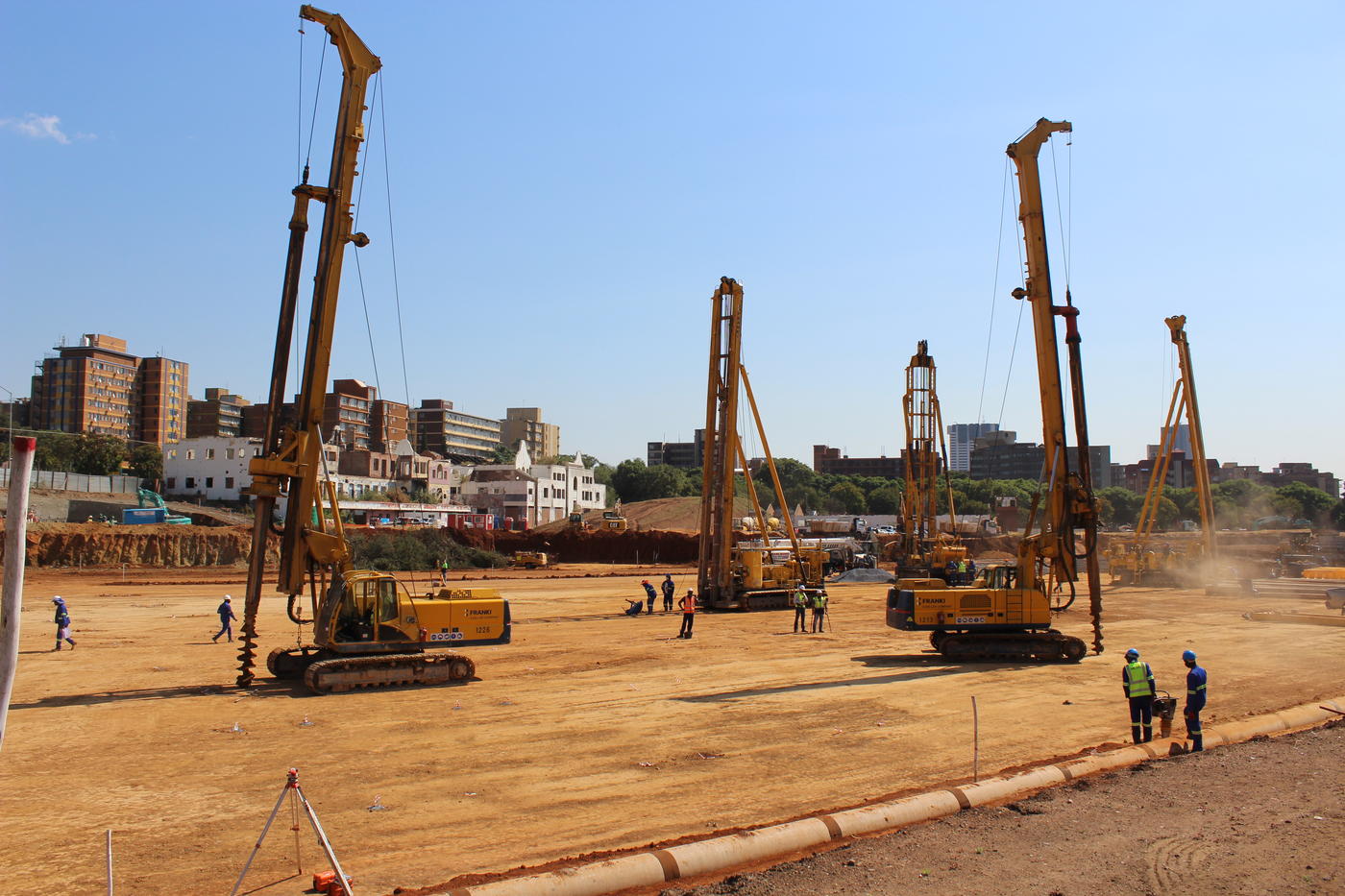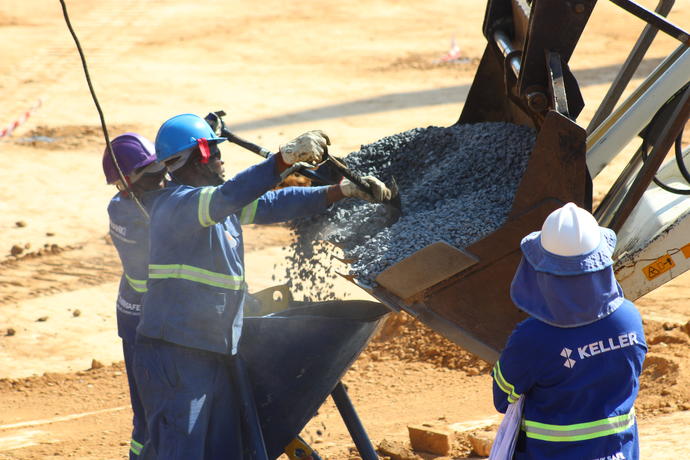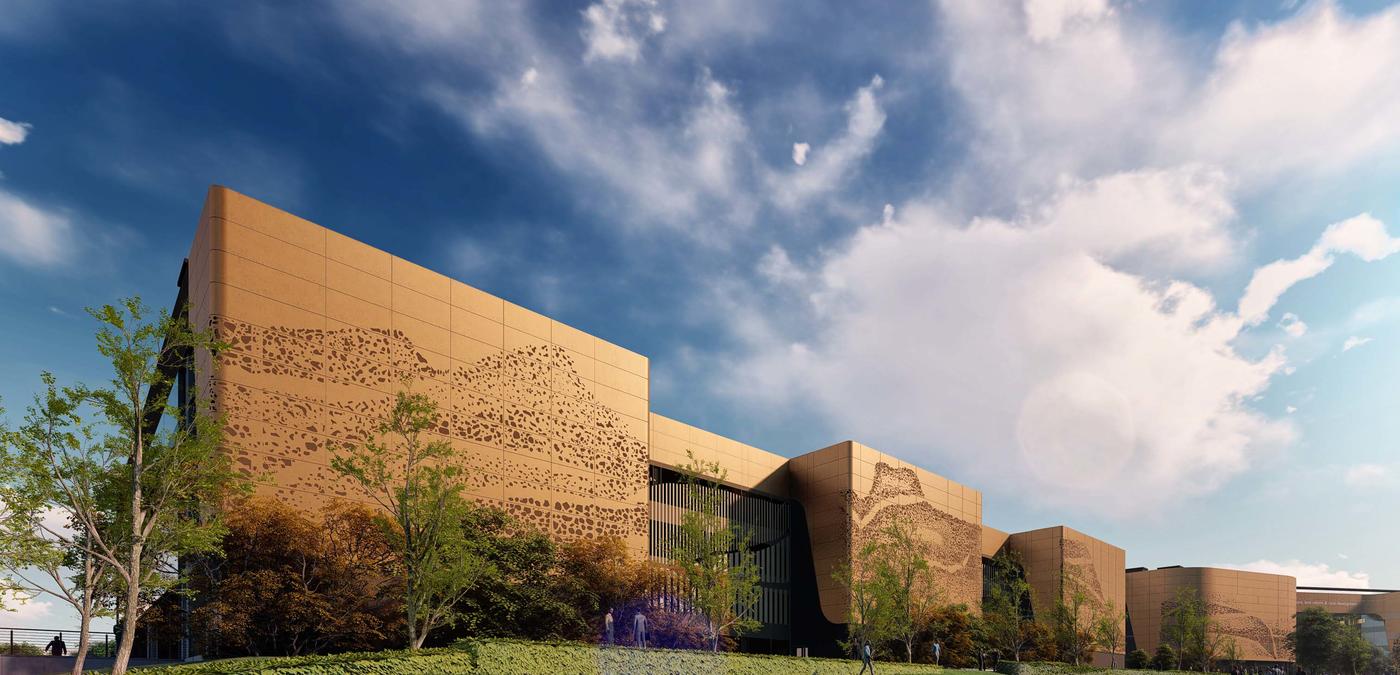Specialist geotechnical contractor, Keller Geotechnics SA (Pty) Ltd., has completed the foundation work on the impressive Department of Agriculture, Land Reform and Rural Development (DALRRD) building in Pretoria, thus paving the way for the commencement of construction work on the multi-storey structure.

High column loads from the proposed structure, as well as challenging geotechnical conditions, reinforced the need for a detailed specialized piled foundation solution to be used from the outset. As a result, lead contractor on the project, WBHO/Mhlaba Properties (DRD D&C JV), appointed Keller to design and supply an appropriate piling solution that would ensure the building is rock solid when completed.
According to Keller’s senior projects manager, Paulo Alves, the team studied the soil conditions and found the local geology comprised a predominantly north/south trending deeply weathered Syenite dyke with an undulating bedrock profile. Weathering of the syenite tends to form core stones and a shallow groundwater table was also present.
Man-made ground overlying the weathered syenite comprised loose cobbles, boulders and ash resulting in unstable test pits. The combination of these challenging conditions necessitated the scrutiny of the various piling techniques available, and ultimately the Franki DCIS pile was determined as the optimum piling solution. This was detailed and discussed in length with the client, DRD D&C JV and the professional team and accepted as the piling alternative to be implemented on the project.

Perfect timing
In the end the solution called for over 1000 piles to be constructed at a rate of just under 21 piles per day. This was no mean feat considering it would require over 120 tons of reinforcing, 2,340m³ of structural site batched concrete, as well as approximately 980m³ of dry lean mix for the bulbous bases.
This enabled the sinking and construction of piles comprising of 59 x 410mm diameter piles, 477 x 520mm diameter piles and 511 x 620mm diameter piles. The company also installed 16 x 410mm and 16 x 520mm diameter piles for the main contractor’s cranes. This provided a total of 1079 piles to complete the project.
“We had an original contract period of 12 weeks using four driving and two drilling rigs. At the commencement of the project, we decided to introduce an additional driving rig, taking this to a total of five. This proved to be the right decision as it allowed us to complete the piling project in just over 10 weeks. We also managed to timeously hand the site over in different stages to the main contractor so they could start their construction works earlier than they had originally anticipated.”
“Some of the highlights of the project for Keller’s team was the opportunity to see seven of our biggest rigs in the fleet operating in one contract which contributed considerably to the pace at which we performed.”

Team mentality
“But perhaps the most relevant take-out from this was the confirmation that when there is excellent cooperation between the piling contractor, the client’s professional team and the main contractor, spectacular results can be achieved. In this case it provided the main contractor with the opportunity to access the pile positions earlier and therefore have an upper hand to advance its scope of the works.”
He adds that the project required the fulltime services of 65 employees who were based on site for the prospect duration. They used four Franki piling rigs, one Liebherr 65-ton crane, two Soilmech SR30 drilling rigs, four Fiori self-batching transit mixers and three TLB’s in order to timeously execute the scope of works.
It also provided an opportunity to introduce the local emerging suppliers and labour with the prospect to provide materials and manpower of 25 workers for the contract. Throughout the contract duration the company engaged with four different material suppliers for concrete aggregates, cement, diesel, and TLB’s. This opened up an opportunity to pass down training on certain aspects of its operations.
Safety first
As far as safety was concerned Keller Geotechnics SA yet again delivered from a safety perspective. A total of 36 000-man hours were registered on the project without incurring any injuries. Numerous challenges were encountered during the project.
“The close interaction between plant and our people working in a restricted environment had to be well planned and co-ordinated from the onset. Keller’s rigorous safety philosophy of ‘Think Safe, Work Safe, Go Home Safe’ was adhered to and, together with good planning and leadership, our impeccable safety record has been preserved. The mindset that the safety of our people remains our key priority continues to breed a safe working environment approach,” adds Stefan Buys, Keller regional HSEQ manager.
